Abstract
Ex vivo gene therapy is a possible treatment for several muscular dystrophies. The best transgene to be expressed and the appropriate cell type to be used currently remain the subject of many investigations. The most adequate gene modification technique also remains to be established. Different transgenes have already been tested in animal models and transgenic mice. Several cell types were evaluated during the last decades and several vectors or transfection methods were analysed. From these essays, over time, several proofs of principles were made to demonstrate the feasibility of this type of therapy. For DMD, it is possible to express several truncated versions of dystrophin or exon skipping molecules. It is also possible to express other molecules that would mitigate the phenotype. Different cell types are also available. From the well documented myoblasts to the AC133 positive cells, the choice of cell types is exploding. Gene modification also evolved during the last decade. Efficient transfection technique and viral vectors are currently available. Given all these possibilities, the researcher has to make several choices. This review is trying to give clues of how to make those choices.
Keywords: Viral vectors, stem cells, transfection, myoblasts, HSCs, transplantation
Current Gene Therapy
Title: Ex Vivo Modification of Cells to Induce a Muscle-Based Expression
Volume: 6 Issue: 6
Author(s): Simon P. Quenneville and Jacques P. Tremblay
Affiliation:
Keywords: Viral vectors, stem cells, transfection, myoblasts, HSCs, transplantation
Abstract: Ex vivo gene therapy is a possible treatment for several muscular dystrophies. The best transgene to be expressed and the appropriate cell type to be used currently remain the subject of many investigations. The most adequate gene modification technique also remains to be established. Different transgenes have already been tested in animal models and transgenic mice. Several cell types were evaluated during the last decades and several vectors or transfection methods were analysed. From these essays, over time, several proofs of principles were made to demonstrate the feasibility of this type of therapy. For DMD, it is possible to express several truncated versions of dystrophin or exon skipping molecules. It is also possible to express other molecules that would mitigate the phenotype. Different cell types are also available. From the well documented myoblasts to the AC133 positive cells, the choice of cell types is exploding. Gene modification also evolved during the last decade. Efficient transfection technique and viral vectors are currently available. Given all these possibilities, the researcher has to make several choices. This review is trying to give clues of how to make those choices.
Export Options
About this article
Cite this article as:
Quenneville P. Simon and Tremblay P. Jacques, Ex Vivo Modification of Cells to Induce a Muscle-Based Expression, Current Gene Therapy 2006; 6 (6) . https://dx.doi.org/10.2174/156652306779010651
| DOI https://dx.doi.org/10.2174/156652306779010651 |
Print ISSN 1566-5232 |
| Publisher Name Bentham Science Publisher |
Online ISSN 1875-5631 |
Call for Papers in Thematic Issues
Programmed Cell Death Genes in Oncology: Pioneering Therapeutic and Diagnostic Frontiers (BMS-CGT-2024-HT-45)
Programmed Cell Death (PCD) is recognized as a pivotal biological mechanism with far-reaching effects in the realm of cancer therapy. This complex process encompasses a variety of cell death modalities, including apoptosis, autophagic cell death, pyroptosis, and ferroptosis, each of which contributes to the intricate landscape of cancer development and ...read more
Related Journals
 2
2
- Author Guidelines
- Graphical Abstracts
- Fabricating and Stating False Information
- Research Misconduct
- Post Publication Discussions and Corrections
- Publishing Ethics and Rectitude
- Increase Visibility of Your Article
- Archiving Policies
- Peer Review Workflow
- Order Your Article Before Print
- Promote Your Article
- Manuscript Transfer Facility
- Editorial Policies
- Allegations from Whistleblowers
- Announcements
Related Articles
-
Targeted Delivery for Neurodegenerative Disorders Using Gene Therapy Vectors: Gene Next Therapeutic Goals
Current Gene Therapy Large-Scale Production Means for the Manufacturing of Lentiviral Vectors
Current Gene Therapy Plasmid DNA Manufacturing Technology
Recent Patents on Biotechnology RNA-Mediated Therapeutics: From Gene Inactivation to Clinical Application
Current Topics in Medicinal Chemistry Current Management of Traumatic Rupture of the Descending Thoracic Aorta
Current Cardiology Reviews Pulmonary Vasodilators in the Management of Low Cardiac Output Syndrome After Pediatric Cardiac Surgery
Current Vascular Pharmacology Self-assembly of Functional Molecular Shuttles Based on Organic Conjugated Molecules
Current Organic Chemistry Impact of Pulmonary Vascular Resistances in Heart Transplantation for Congenital Heart Disease
Current Cardiology Reviews Dissections of the Thoracic Aorta and Evolving Endovascular Strategies
Current Hypertension Reviews Mechanical Circulatory Support of the Critically Ill Child Awaiting Heart Transplantation
Current Cardiology Reviews Adult Stem Cell Transplants for Spinal Cord Injury Repair: Current State in Preclinical Research
Current Stem Cell Research & Therapy The Adult Patient with Eisenmenger Syndrome: A Medical Update After Dana Point Part I: Epidemiology, Clinical Aspects and Diagnostic Options
Current Cardiology Reviews Chest Pain in Children
Current Pediatric Reviews Stem Cell Therapy for Ischaemic Stroke: Translation from Preclinical Studies to Clinical Treatment
CNS & Neurological Disorders - Drug Targets A Review of Systemic Vasodilators in Low Cardiac Output Syndrome Following Pediatric Cardiac Surgery
Current Vascular Pharmacology Stem Cells in Skeletal Tissue Engineering: Technologies and Models
Current Stem Cell Research & Therapy Baculovirus Expression Vectors for Insect and Mammalian Cells
Current Drug Targets Targeting the Coagulation Factor Fibrinogen for Arthritis Therapy
Current Pharmaceutical Biotechnology Biochemical Markers for Brain Injury Monitoring in Children with or without Congenital Heart Diseases
CNS & Neurological Disorders - Drug Targets Complications of the Chest Wall and the Respiratory System After Surgery and Functional Performance
Current Respiratory Medicine Reviews












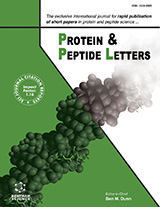
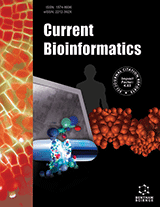
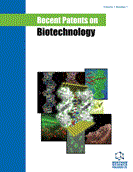
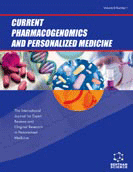
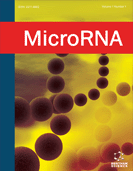
.jpeg)








